More worm stories: The promises and perils of a living installation
Published in Social Sciences, Arts & Humanities, and Business & Management

What place do wax worms have in our stories? In my original article Telling Ecopoetic Stories: Wax Worms, Care, and the Cultivation of Other Sensibilities, I explore how wax worms are entangled in multiple narratives and correlative practices of care before offering a counter-story based on my participation in the making of an art installation hosting wax worms as part of the experimental exhibition The Living Room at Medical Museion in Copenhagen. I tell this counter-story to question our anthropocentric practices of caring and the stories we attach to them in the spirit of Maria Puig de la Bellacasa’s notion of ecopoetics. In this blog post, I tell more worm stories to offer the context behind the paper and unravel the difficulties and ambiguities involved the making of a living art installation and practicing posthuman care.
April 8, 2021: Inviting wax worms into my home
I receive a small brown cardboard box at my doorstep containing bubble wrap, a heating pack and a small plastic box with wax worms in a feeding substrate. I let the worms adjust to the temperature in my apartment for three hours, while I prepare their future home: A tomato sauce jar with a metal filter to secure airflow while keeping the worms inside the jar. Inside the jar, I arrange a piece of honeycomb (their usual source of food) and move the worms into their new home. Handling the worms, however, feels awkward and I decide to use an unusually long teaspoon. Their presence in my home seems to transgress my imagined inside/outside boundary.
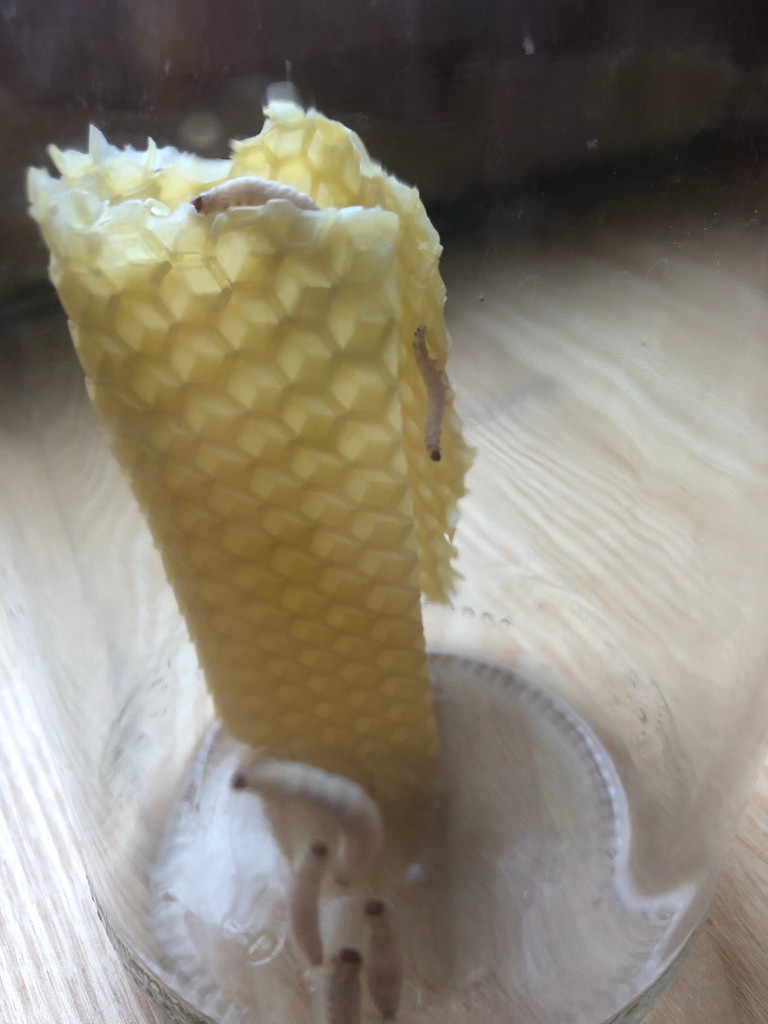
Over the next month, I observe them. While the worms are almost completely entangled in the honeycomb, one worm catches my attention as it ventures into the top of the jar and looks back at me. This mutual attention gives a weird sense of acquaintance and bestows me with an added sense of responsibility.
Yet their lifespan is also short and after roughly a month they begin their metamorphosis leaving me in a dilemma. If I keep them inside the jar, they will die, yet in the wild they are a pest threatening bee populations. This tension troubles my caring and leads to a gradual detachment from them as they lay their eggs inside the jar and die. Meanwhile, I ponder how these dilemmas will play out when we introduce worms into a museum.
September 24, 2021: When wax worms enter the museum
Together with conservator Amalie Schjøtt-Wieth, I introduce a population of wax worms to their new home inside an art installation – Worm dome – developed together with artist Eduardo Abrantes. We are sitting at a table wearing gloves and transferring one worm at a time from their feeding boxes to a glass desiccator. Desiccators are sealable enclosures used to preserve moisture sensitive materials. Inside, Eduardo has furnished the desiccator with plastic waste from a local lab for the worms to eat, discarded medical objects and analog sensors to transform the worms’ eating, digestion and excretion into a soundscape. A soundscape intended to connect visitors to the metabolic processes going on inside the installation. While handling the worms resembles Amalie’s usual work as a conservator, she describes how museum objects usually don’t flee out of her hands. We are essentially practicing museum care in reverse: Torn between creating a livable habitat and protecting the museum. For Amalie, the desiccator provides a meeting point between these objects of care connected by the sealant she uses to secure the lid, so no one accidentally lets the worms out. Yet sealing the desiccator also proves fatal as time progresses making it almost impossible to respond when the worms begin dying a month later.
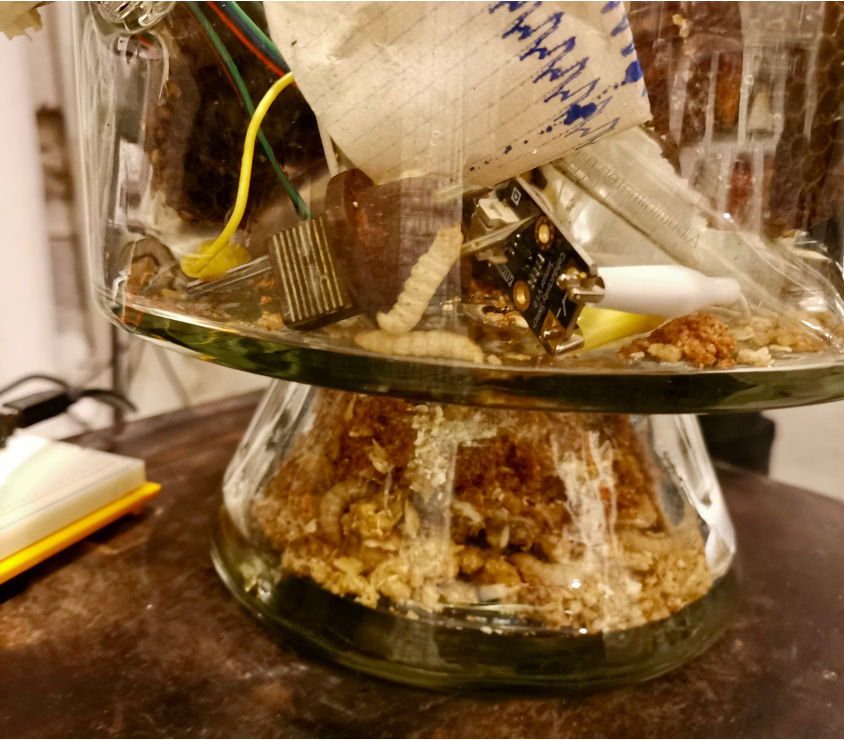
January 7, 2022: Outbreak!
After another Covid-shutdown, we return to The Living Room to find Worm dome in a decomposing state. The bottom of the installation is blackish and mouldy, and residues cover the objects inside. Sealed and fragile the desiccator-environment marks our inabilities to control even such a small space. As we gaze in from the outside, we find comfort realizing that it is turning into a compost of rot and microorganisms granting it a new life.
Yet a life less containable as grayish brownish debris emerges outside the installation. When we zoom in on the debris with a microscope, it is teeming with tiny mites (presumably Lepidoglyphus destructor) breaching the crucial boundary between the living installation and the museum space.
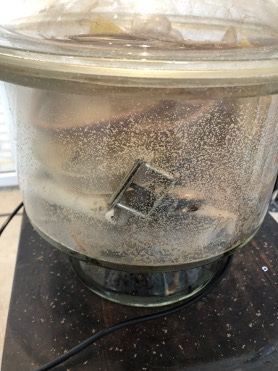
Our attempts at a posthuman practice of care once again unsettled and troubled. On the one hand, we can celebrate the openness and indeterminacy of life beyond boundaries. Yet on the other hand, we cannot abstain from our responsibility and accountability. While new lifeforms emerge within (and around!) their enclosed habitat, we envelop the installation in two plastic bags turning it into an ironic monument of our own shortcomings. Yet beyond our attempts at control, is there after all still hope for life at the museum and beyond?
May 25, 2023: Excavating an unruly installation
Just before The Living Room closed, we revisit Worm dome to explore the uncertainty of its ending as a living decomposing installation. Together with archaeologist Tim Flohr Sørensen, we “excavate” it as a mode of care paying it a final respect by noticing its transformations and differences from our initial intentions. On a bright but windy day, we “excavate” Worm dome in the courtyard at Medical Museion. The wind turning into an agent of change as we smash the lid (the only option to get in there…) and begin to organize objects on a table. The wind particularly asserting its agency as I let the sugar mites, by now so central to the installation, blow away. Inside the installation we find entangled objects sticking together in various constellations resting on a smelly mud-like ground. I take a sample of this smelly material and with the help of scientist Jakob Blæsbjerg Hoff identify an extremophile fungus living inside our installation: Aspergillus Glaucus – a robust fungus that can survive in a variety of different environments. This new inhabitant emphasizes how the installation was (trans)formed by multiple uninvited microbial agencies reiterating the forces of a life uncontainable.
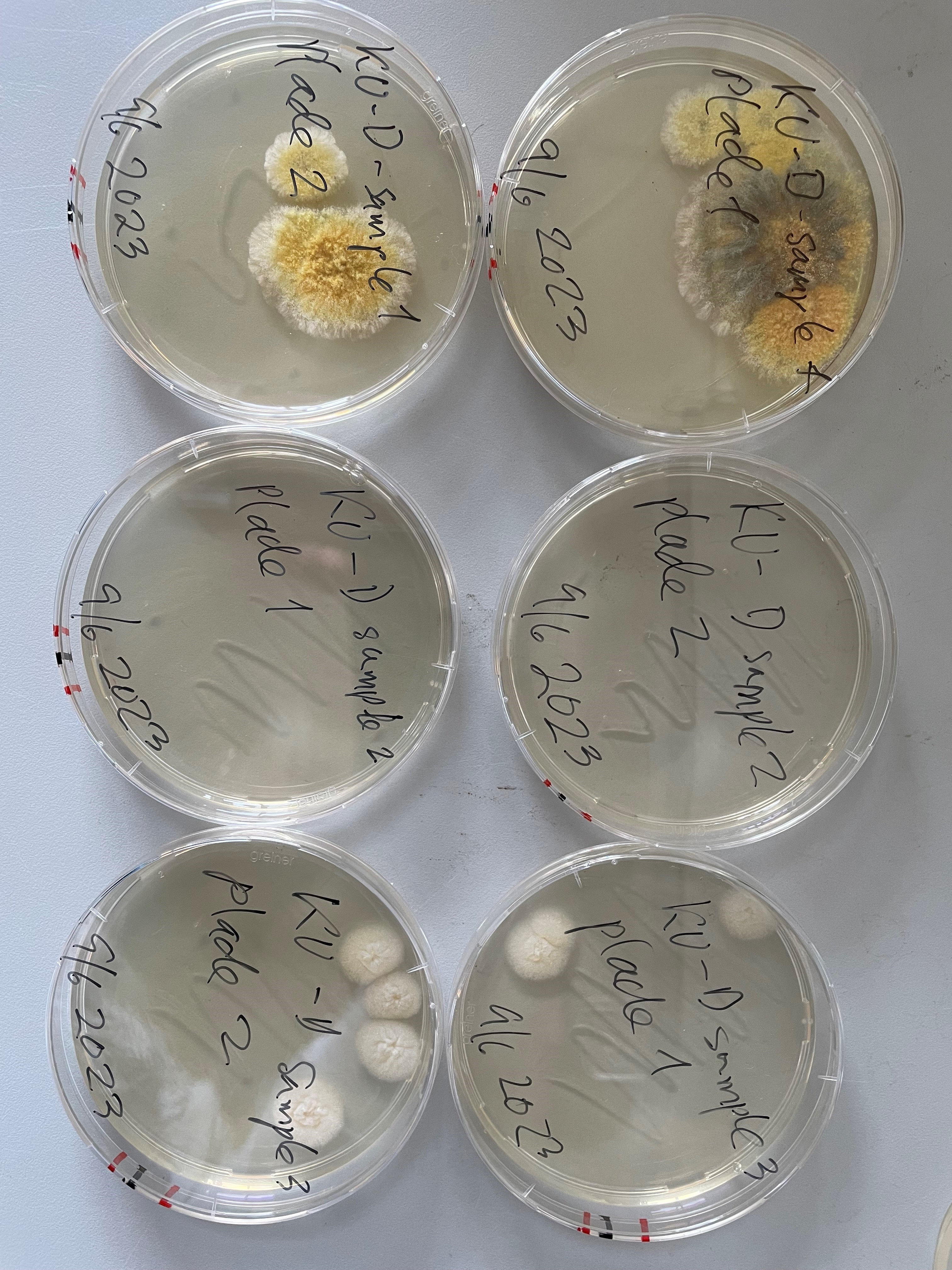
For now, Worm dome is awaiting its uncertain future in a basement at Medical Museion, but who knows how its story will end. These multiple stories of a living installation, however, leave us with a troubled sense of care that highlights how different even conflicting meanings of care often travel together within a temporally dynamic and spatially stretched choreography.
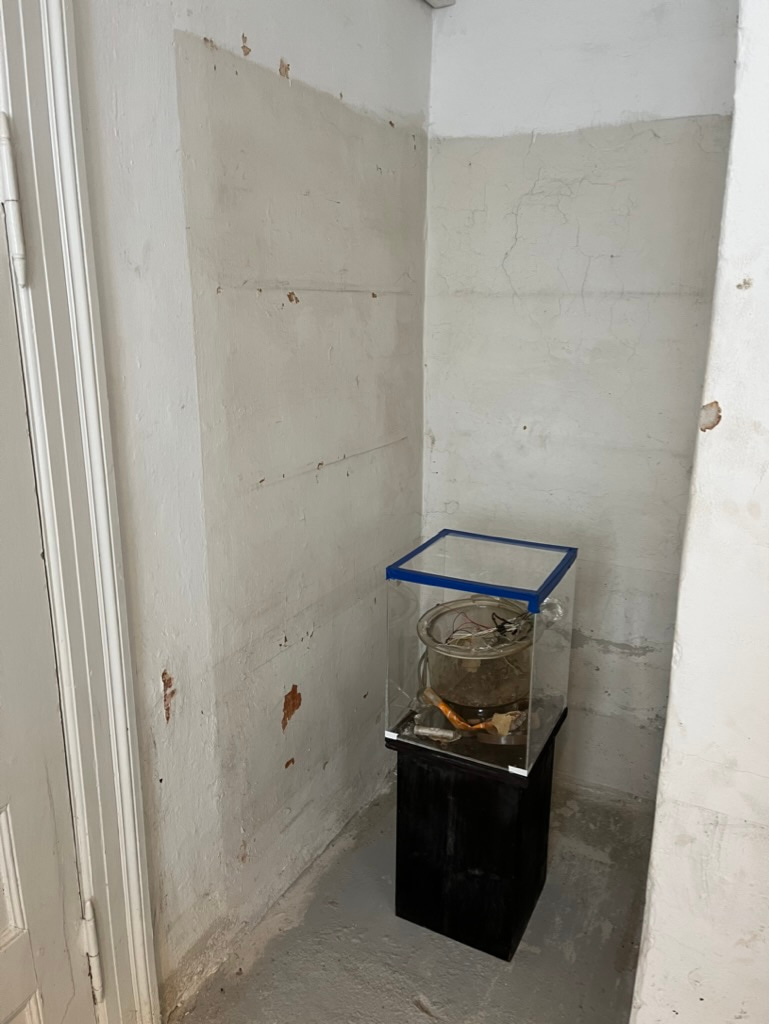
Follow the Topic
-
Journal of Medical Humanities

This journal is a peer-reviewed, scholarly journal that publishes innovative research, creative scholarship, poetry, essays, reviews, and short reports in the health humanities.
Related Collections
With Collections, you can get published faster and increase your visibility.
Comparative Health Humanities
Publishing Model: Hybrid
Deadline: Ongoing
The Future of Medical/Health Humanities
Publishing Model: Hybrid
Deadline: Ongoing





Please sign in or register for FREE
If you are a registered user on Research Communities by Springer Nature, please sign in